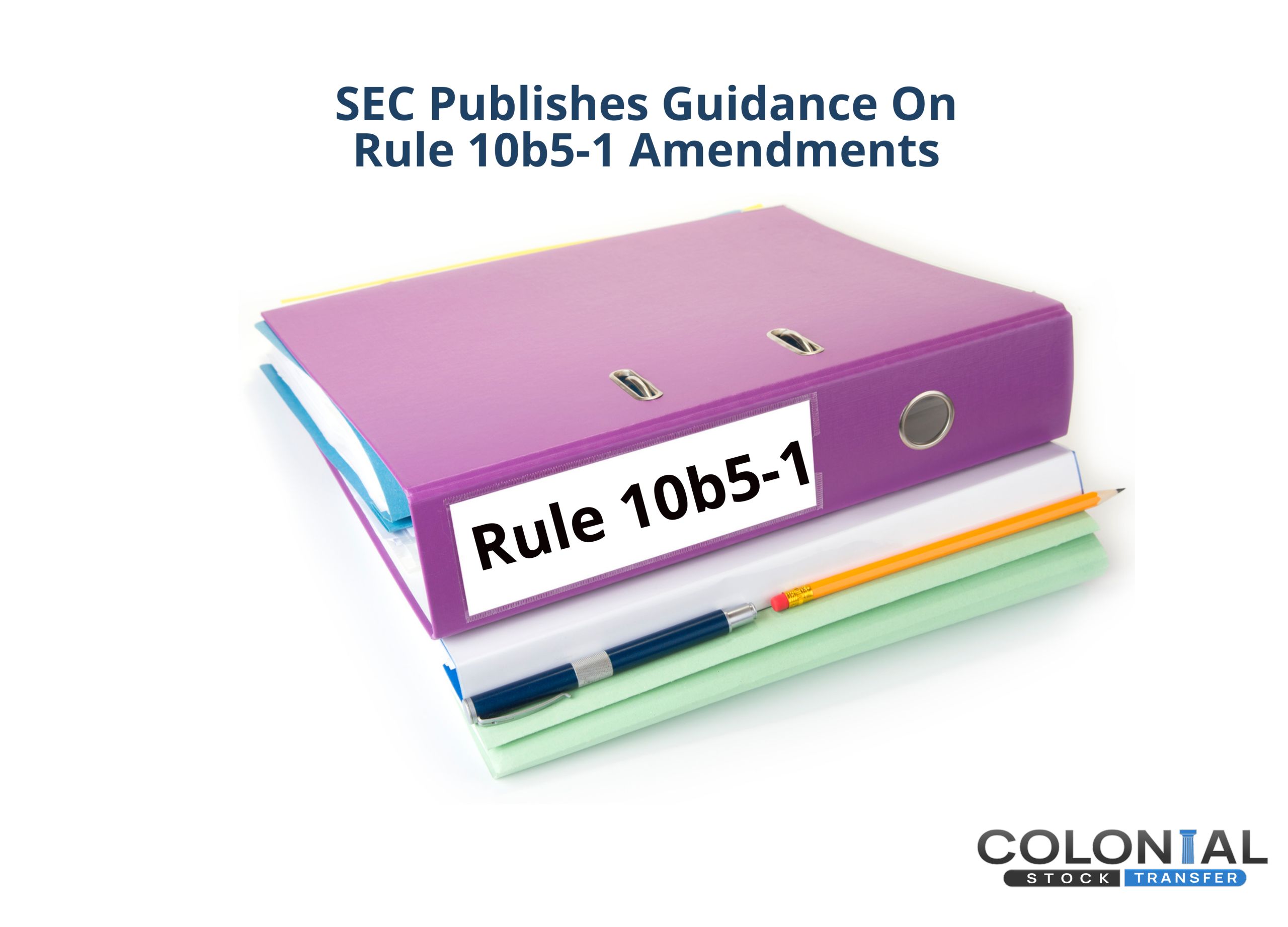
The Securities and Exchange Commission (SEC) has recently released important amendments to Rule 10b5-1, further refining insider trading regulations and offering more clarity to market participants. This move builds upon ongoing efforts to strengthen market integrity, ensuring fair and transparent securities trading for all parties involved.
Overview of Rule 10b5-1 and its Importance in Securities Trading
Rule 10b5-1, integral to the Securities and Exchange Act of 1934, lays out regulations designed to combat insider trading and protect investor interests. Its core provisions restrict the purchase or sale of securities based on nonpublic documents or information. The rule is fundamental to the fairness of securities markets, as it aims to prevent unfair advantages that could distort the market and erode investor trust.
Overall, Rule 10b5-1 is the backbone of insider trading law. The rule also accommodates legitimate transactions by insiders through carefully crafted “affirmative defense” provisions, allowing planned trades under specific conditions. Despite Rule 10b5-1’s enactment in 2000, further clarification and regulation have been necessary to keep pace with the evolving complexities of securities markets, leading to the SEC’s amendments.
SEC Proposes Amendments Relating to Rule 10b5-1
In response to these complexities, the SEC has made a series of amendments to Rule 10b5-1, tightening controls on insider trading while maintaining sufficient flexibility for lawful transactions. The updates are comprehensive, covering aspects ranging from affirmative defence conditions to enhanced disclosure requirements.
The revised rules mandate a cooling period before trading can commence under a plan, with different durations specified for corporate officers and directors, and other individuals. The rules also limit single-trade plans and prohibit overlapping trading plans. A crucial addition is the requirement for officers and directors to certify their lack of awareness of any material nonpublic information when adopting new or modified trading plans.
Another significant amendment is the expansion of disclosure requirements, promoting greater transparency in securities trading. Insiders are now obliged to disclose whether a transaction was executed under a trading plan, and companies are required to disclose their insider trading policies and procedures.
Implementing a Rule 10b5-1 plan
The updated Rule 10b5-1 poses new considerations for insiders wishing to establish a trading plan. A critical factor to consider is the new cool-down period, which restricts trading from commencing immediately after the adoption of a trading plan. The waiting period is 90 days for corporate officers and directors and 30 days for other individuals.
Furthermore, any changes to the trading plan, including the amount, price, or timing of the purchase or sale of the securities, would be treated as the termination of the existing plan and the start of a new one. This necessitates another cooling-off period, reinforcing the need for a new trading plan under Rule 10b5-1.
Finally, it is paramount for corporate officers and directors to ensure they are not aware of any material nonpublic information when adopting a new or modified plan. They are required to certify their lack of such knowledge, underlining the high degree of responsibility in establishing a Rule 10b5-1 trading plan.
Future Outlook: Anticipated Effects and Potential Developments Related to Rule 10b5-1
The amendments to Rule 10b5-1 represent a significant development in the regulation of insider trading. By imposing stricter rules and clearer guidelines, the SEC aims to bolster market integrity and enhance investor trust in the securities markets.
These amendments also signal a shift towards greater transparency and responsibility in securities trading. The expanded disclosure requirements are expected to provide a wealth of information for investors and market observers, thus levelling the playing field and promoting fair competition. However, these amendments are just the latest step in the evolving landscape of insider trading law.
Key Takeaways and Recommendations for Companies and Market Participants
In light of the SEC’s recent amendments to Rule 10b5-1, a few key takeaways for companies and market participants include:
- Understand the enhanced rules and their implications for trading plans.
- Be aware of the new cooling-off period before trading can commence under a plan.
- Take note of the expanded disclosure requirements for companies and insiders.
- Acknowledge the added responsibilities of corporate officers and directors when adopting trading plans.
- Stay updated on further developments to SEC regulations and their impact on insider trading.
- Reach out to Colonial Stock Transfer for assistance in understanding and navigating these changes to ensure you are maximizing your transfer agent services.
Being proactive and prepared in the face of these amendments is crucial for all market participants. That is where we can help you.
Rely on Colonial Stock Transfer for Help Navigating a Changing Financial Landscape
As SEC guidance continues to evolve, it’s crucial to have a knowledgeable and reliable partner to help you navigate the changes related to securities trading and how they might impact corporate policies. Colonial Stock Transfer, is uniquely positioned to guide you through this changing landscape. We even have case studies on these changes and potential investor implications that can help you.
Our team is committed to helping our clients understand and comply with the new Rule 10b5-1 amendments. Contact us today for unparalleled guidance and support in managing your securities trading activities.




